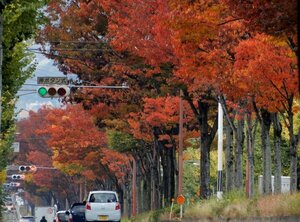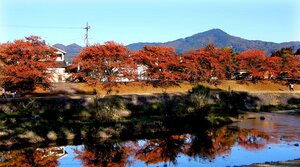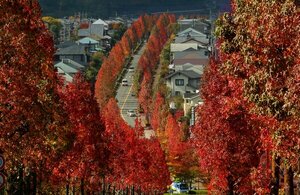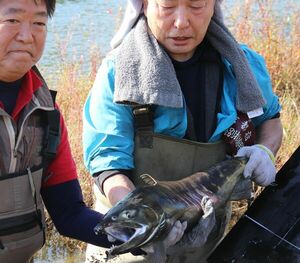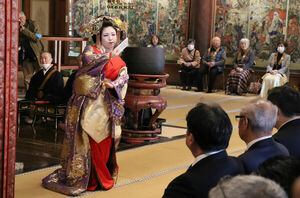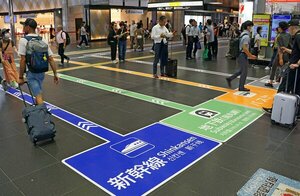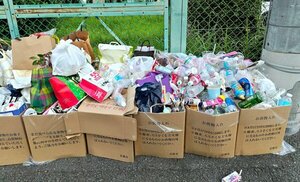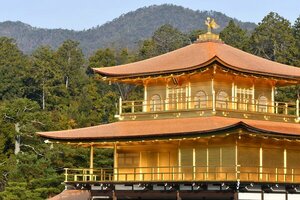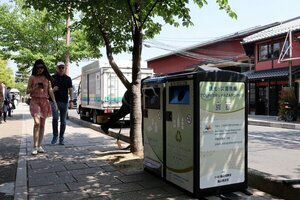There are places in Kyoto that are visited by inbound tourists. Nowadays, you may not be offended if I say that it is attracting as much attention as Kinkaku-ji, Nishiki Market, or Arashiyama. These masterpieces, which are the result of Japanese craftsmanship and beautiful architecture, are attracting visitors from overseas and are becoming a new "sacred place."
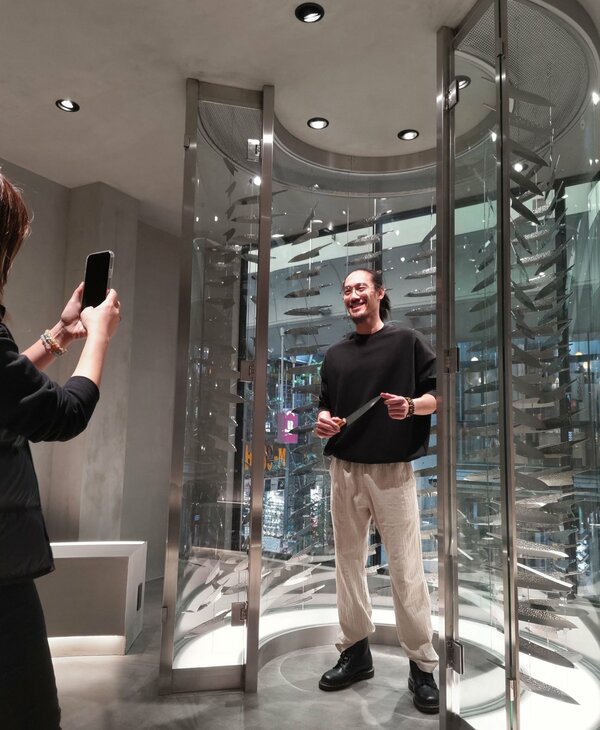
Teramachi Kyogoku Shopping Street in Nakagyo Ward, Kyoto City, where many tourists come and go. At Jikko Knife Kyoto Nishikideramachi store, which opened in January, David Boo, who came from Germany, took a photo in front of the 3-meter-tall "Knife Tower" made of 180 knives. It fit in.
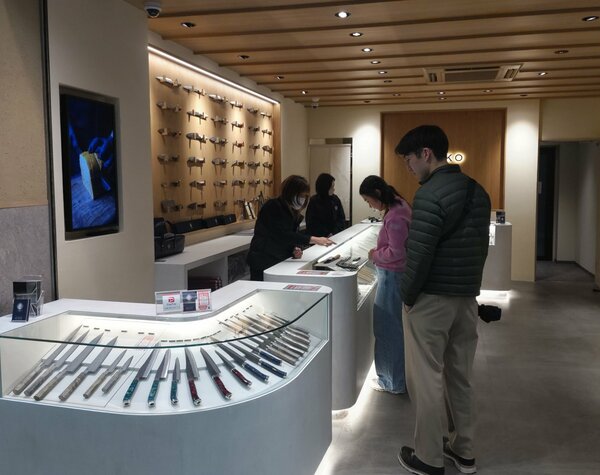
The shining knives look just like migratory fish swimming in the sea, and are becoming recognized as photogenic spots. David, who purchased the knife, said, ''It's really excellent and beautiful. I'm looking forward to cooking with it.''
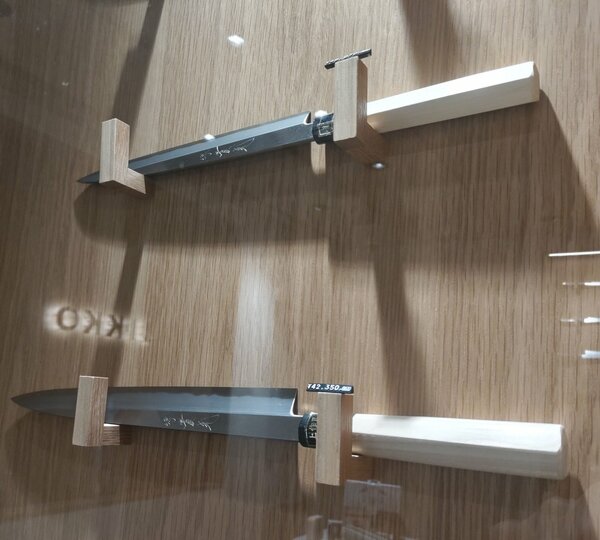
At the store, which stocks more than 100 types of cutlery, visitors from the United States and Europe are constantly buying luxury items ranging from 15,000 yen to 30,000 yen. Why. According to Toshiyuki Sanemitsu (47 years old), president of Sanimitsu (Sakai City, Osaka Prefecture), which sells masterpieces such as ''Sakai cutlery'' produced in Sakai City, Osaka Prefecture, cooking methods are changing with the spread of Japanese cuisine. This is thought to be one of the reasons. He says, ''The style is changing from pounding and cutting to slicing the way we do in Japan.'' For this reason, sharp Japanese knives are attracting attention.
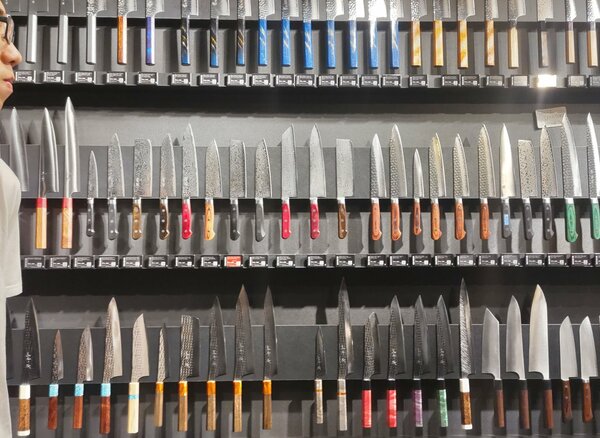
Many customers come after hearing about the reputation of Sakai knives, which are used by most Japanese cuisine chefs in Japan. Purchasers range from chefs to the general public. A type called ''Damascus'' with beautiful ripples on the blade, and ''Gion'' knife with a white handle and other parts are also popular, and some knives are purchased as furnishings to decorate a room.
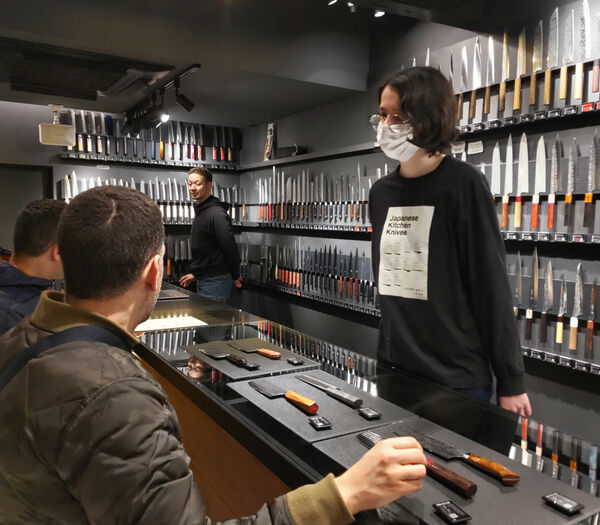
Last year, Jiko opened the Kyoto Pontocho store, and the Kyoto Nishikideracho store is the second store in Kyoto. Mr. Sanemitsu says, ''Since opening, the number of customers at the Nishikideracho store has exceeded expectations.Everyone agrees that it's beautiful.Japanese cutlery is being recognized.''
“Seisuke Knife Kyoto Store” opened last spring in Teramachi Kyogoku Shopping District. The staff is fluent in English and Chinese, and is able to respond to overseas visitors, who make up more than 90% of the store's visitors. Due to the coronavirus pandemic, the trend of cooking at home has expanded. There is an influx of tourists visiting Japan who want to enjoy cooking with better knives.
Stainless steel is common overseas, and there are some serious-minded people who want Japanese steel. Commenting on the success, staff member U Asher said, ''I'm very happy.Japanese cutlery can be called usable works of art.''I want to convey the effort of the craftsmen that goes into making cutlery.''
In Teramachi Kyogoku Shopping Street, there are other cutlery shops that have opened in recent years. Although competition seems to be fierce, Keiki Sho, a staff member, says, ''It's exciting the industry.From a customer's point of view, there's an advantage of being able to choose from a variety of products.We want to work together to spread the word about our appeal.''
Not only new stores but also long-established stores are not losing out. The Hayakawa Knives Store, which was founded in the Meiji era and is located on the upper floor of Sakaimachi Dori Bukkoji Temple, not far from the Teramachi Kyogoku Shopping District, is filled with visitors from Australia, France, and other countries, and there are times when customers have to wait to get in. The owner, Masaya Hayakawa (86 years old), is said to be well known in Australia for reasons unknown. He says, ''In the past, foreigners didn't come here,'' and says it feels like we're separated by a lifetime. In addition to selling the knives, the knives are sharpened using skilled techniques to restore their sharpness, which is appreciated. Masaya Hayakawa says, ''It's fun to be able to interact with foreigners in a variety of ways.'' With the yen weakening, it seems that the number of visitors to Japan will continue to increase.
